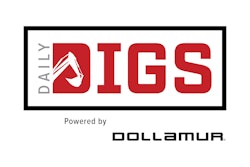|
Copyright 2013 Gannett Company, Inc. All Rights Reserved USA TODAY |
|
October 23, 2013 Wednesday
First EDITION |
|
SPORTS; Pg. 5C
|
|
1155 words
|
| Bears up broadcast ante; State-of-the-art multimedia center gives team, fans 24/7 access |
|
Ed Sherman, Special for USA TODAY Sports,
|
|
It is late Monday afternoon, and the shade starts to hover over the idle practice field. Halas Hall, the Chicago Bears headquarters, is relatively quiet the day after a tough and costly loss to the Washington Redskins, a game that saw the team lose quarterback Jay Cutler and linebacker Lance Briggs to injuries. But in another part of the facility, activity is ramping up. Bright lights flash on, and men test four cameras positions in the shiny new broadcast studio. Host Chris Boden and analyst Dan Jiggetts go over their notes for the last time in preparation for Bears Recap, which will air shortly on Comcast Sports Net Chicago. Jiggetts, an offensive tackle for the Bears from 1976 to 1982, takes a long look at his lavish surroundings, which went live last week. He has memories of playing in relatively spartan digs during an era when owner George Halas, who died in 1983, kept a firm grip on his wallet. "This is such a huge leap forward," Jiggetts said. "I wonder what the old man would think of this." The Bears, a franchise once accused of being stuck in the 19th century, have taken a bold move into the 21st century by building the most advanced in-house multimedia facility in the NFL. Much of the 40,000-square-foot addition to Halas Hall features state-of-the-art TV and radio studios; deluxe new interview rooms for use by the team and network studio shows; and a technical center, Bears director of broadcasting Greg Miller says, capable of operating a network. There also is event space, allowing the team to bring in studio audiences for shows. When asked if any team in the NFL has a similar facility, Miller said, "No, but they will." Indeed, with exploding NFL television ratings, individual teams have become media content companies to cash in on the insatiable demand for all things football. The Bears produce multiple team-branded TV shows that are distributed locally in Chicago. They also air regular video features on the team's website, and the Bears were the first -- and still one of the few -- teams to produce their preseason game coverage. In the new media age, teams are able to go above and beyond what the networks and the local news outlets are able to deliver, filling a huge void and extending their brands. Said Miller, "We go 24/7 on the Bears." "What we've found is that you can't give the fans enough, especially the inside access," team President Ted Phillips said. "When we air programs about the draft or our minicamps, we get unbelievable traction from the fans. It made us think, 'How can we do more?'" Previously, Miller and his media crew worked in closet-like offices in Halas Hall's basement. He approached Phillips and Bears chairman George McCaskey about getting more space. They saw the possibilities and told Miller to come up with a plan that would "future-proof" the Bears on the media end. As a result, there's a new radio studio that could enable the team to have its own station on HD radio, one of the next waves in communications technology. The 2,000-square-foot broadcast studio is described as being comparable to, if not better than, many local TV news operations. The new multilevel space, which features interactive wall panels full of images from the team's history, also has rooms for meetings, receptions and events. Now an important sponsor has a choice: Hold your next business meeting at a hotel or Halas Hall? "It all turned out better than we envisioned," Phillips said. From a media standpoint, Brian Lafemina, the NFL's vice president of club business development, called the Bears' new facility "a very forward-thinking move." Access is at a premium these days. It makes things much easier to be able to grab a player or coach after practice and walk him down the hall to do an interview in the studio. "It's going to become a part of the everyday routine," Lafemina said. "Anything that becomes part of the routine makes them more comfortable. Frankly, the players might be less guarded. When they know someone within the (Bears') four walls is making the request, there's a trust level that it will be produced in an appropriate way." The in-house setup, though, does raise the question of whether teams such as the Bears are trying to control the message. Is this an attempt to provide a more sanitized perspective to fans? Phillips denied that media control was the motivation. "If there's one thing I've learned in 30 years with the Bears, it's that you can't control the message," he said. Jiggetts, who does analysis for several Bears-produced shows, says the team hasn't tried to censor him. He discussed Monday the Bears' shortcomings in their loss to the Redskins, especially with a defense that gave up 499 yards. "When I played, we used to say, 'The eye in the sky don't lie,'" Jiggetts said. "Everyone is sophisticated enough to appreciate the truth." Yet there is an element of trying to frame the coverage beyond what the team receives locally and from the networks. Phillips notes Bears-produced content allows the team to showcase community initiatives and go behind the scenes for features that spotlight a player away from the field. Irving Rein, a communications professor at Northwestern who has written extensively on sports marketing and media, says in-house production enables the Bears to control and monetize the content. "I think it definitely is both," Rein said. "If you are producing the product, you have control over the message. Part of it is in response to what's going on with the Internet. It's difficult to get a message through unadulterated. You've got a lot of clutter. They couldn't control the message if a third party was doing it." Rein's uncle, Joe Rein, was the longtime sports editor of the Chicago Daily News, which went out of business in the late 1970s. During the early days of the Bears, Halas regularly called on Rein and the sports editors at Chicago's other newspapers. He would personally hand out news releases and tickets to Bears games in hopes of getting more coverage for the fledgling team. You won't find Halas' grandson McCaskey doing a similar exercise in 2013. "What the Bears are doing evokes of a major entertainment company," Rein said. "It doesn't evoke of George Halas." Miller said he already is receiving calls from other NFL teams that want to check out the new multimedia facility. Lafemina expects other teams will follow the Bears' lead. "Anything that extends the brand and give us more platforms in which to engage sponsors will be a good thing for the clubs," Lafemina said. Phillips and the Bears are in the process of learning exactly what they have with their new multimedia operation. Given how quickly the platforms and technology continue to evolve, he expects the unexpected. He hopes the Bears will be ready. "This gives us such an opportunity to see what the future holds," Phillips said. "Some of it we can't answer right now. "But we know we have the facilities to do what we want to do." |
|
October 23, 2013
|
Terms and Conditions Privacy Policy



































